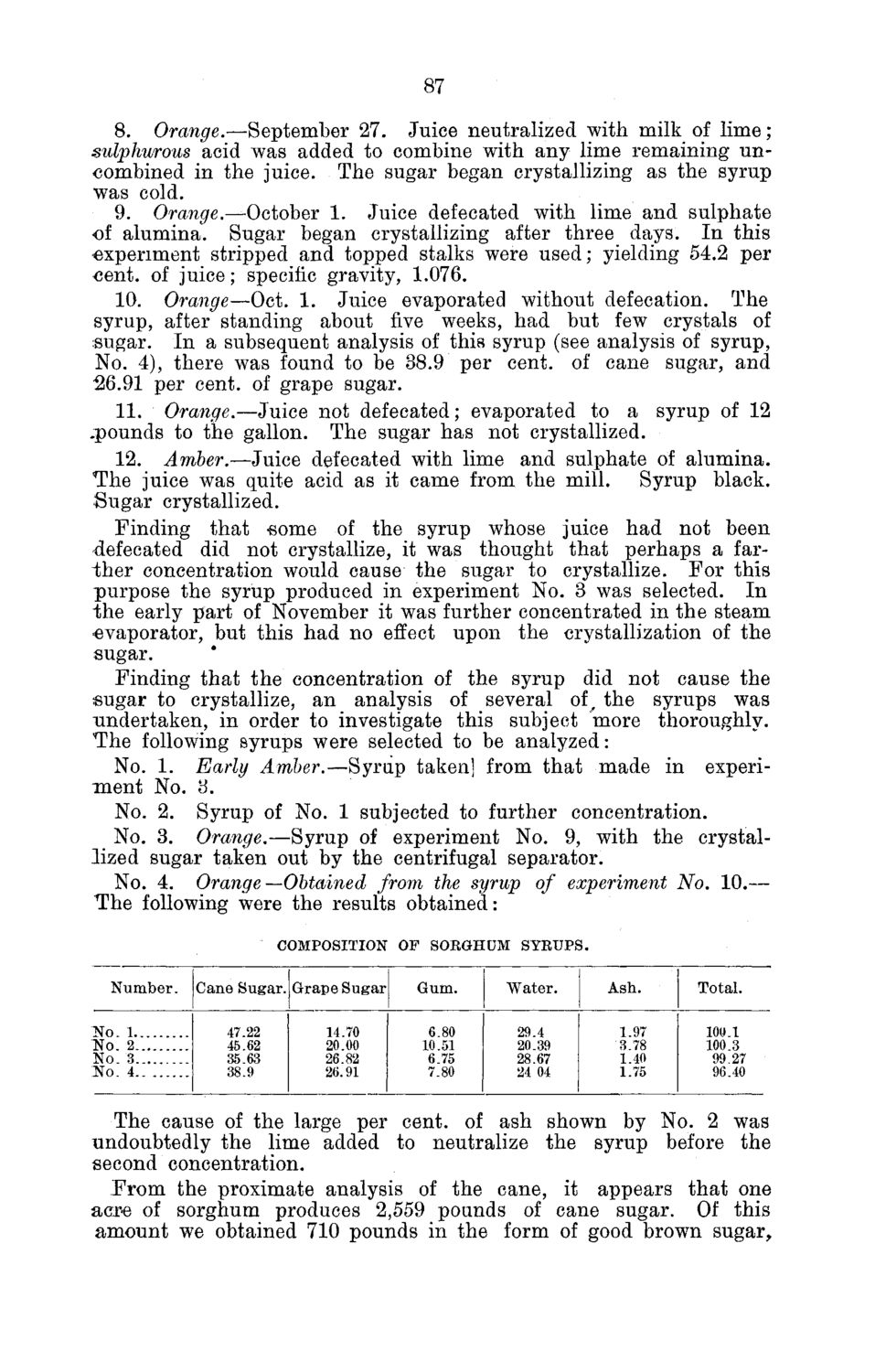| |
| |
Caption: Board of Trustees Minutes - 1882
This is a reduced-resolution page image for fast online browsing.

EXTRACTED TEXT FROM PAGE:
87 8. Orange.—September 27. Juice neutralized with milk of lime ; sulphurous acid was added to combine with any lime remaining uncombined in the juice. The sugar began crystallizing as the syrup was cold. 9. Orange.—October 1. Juice defecated with lime and sulphate of alumina. Sugar began crystallizing after three days. In this experiment stripped and topped stalks were used; yielding 54.2 per cent, of juice; specific gravity, 1.076. 10. Orange—Oct. 1. Juice evaporated without defecation. The syrup, after standing about five weeks, had but few crystals of sugar. In a subsequent analysis of this syrup (see analysis of syrup, No. 4), there was found to be 38.9 per cent, of cane sugar, and "26.91 per cent, of grape sugar. 11. Orange.—Juice not defecated; evaporated to a syrup of 12 .pounds to the gallon. The sugar has not crystallized. 12. Amber.—Juice defecated with lime and sulphate of alumina. The juice was quite acid as it came from the mill. Syrup black. Sugar crystallized. Finding that -some of the syrup whose juice had not been defecated did not crystallize, it was thought that perhaps a farther concentration would cause the sugar to crystallize. For this purpose the syrup produced in experiment No. 3 was selected. In the early part of November it was further concentrated in the steam •evaporator, but this had no effect upon the crystallization of the sugar. Finding that the concentration of the syrup did not cause the sugar to crystallize, an analysis of several of, the syrups was undertaken, in order to investigate this subject more thoroughly. The following syrups were selected to be analyzed: No. 1. Early Amber.—Syrup taken] from that made in experiment No. 3. No. 2. Syrup of No. 1 subjected to further concentration. No. 3. Orange.—Syrup of experiment No. 9, with the crystallized sugar taken out by the centrifugal separator. No. 4. Orange—Obtained from the syrup of experiment No. 10.— The following were the results obtained: COMPOSITION OF SORGHUM SYRUPS. Number. No. TSo. No No. 1 2 3 4 Cane S u g a r . G r a p e S u g a r 47.22 45.62 35.63 38.9 14.70 20.00 26.82 26.91 Gum. 6.80 10.51 6.75 7.80 Water. 29.4 20.39 28.67 24 04 Ash. 1.97 3.78 1.40 1.75 Total. 100.1 100 3 99 27 96.40 The cause of the large per cent, of ash shown by No. 2 was undoubtedly the lime added to neutralize the syrup before the second concentration. From the proximate analysis of the cane, it appears that one aer-e of sorghum produces 2,559 pounds of cane sugar. Of this amount we obtained 710 pounds in the form of good brown sugar,
| |